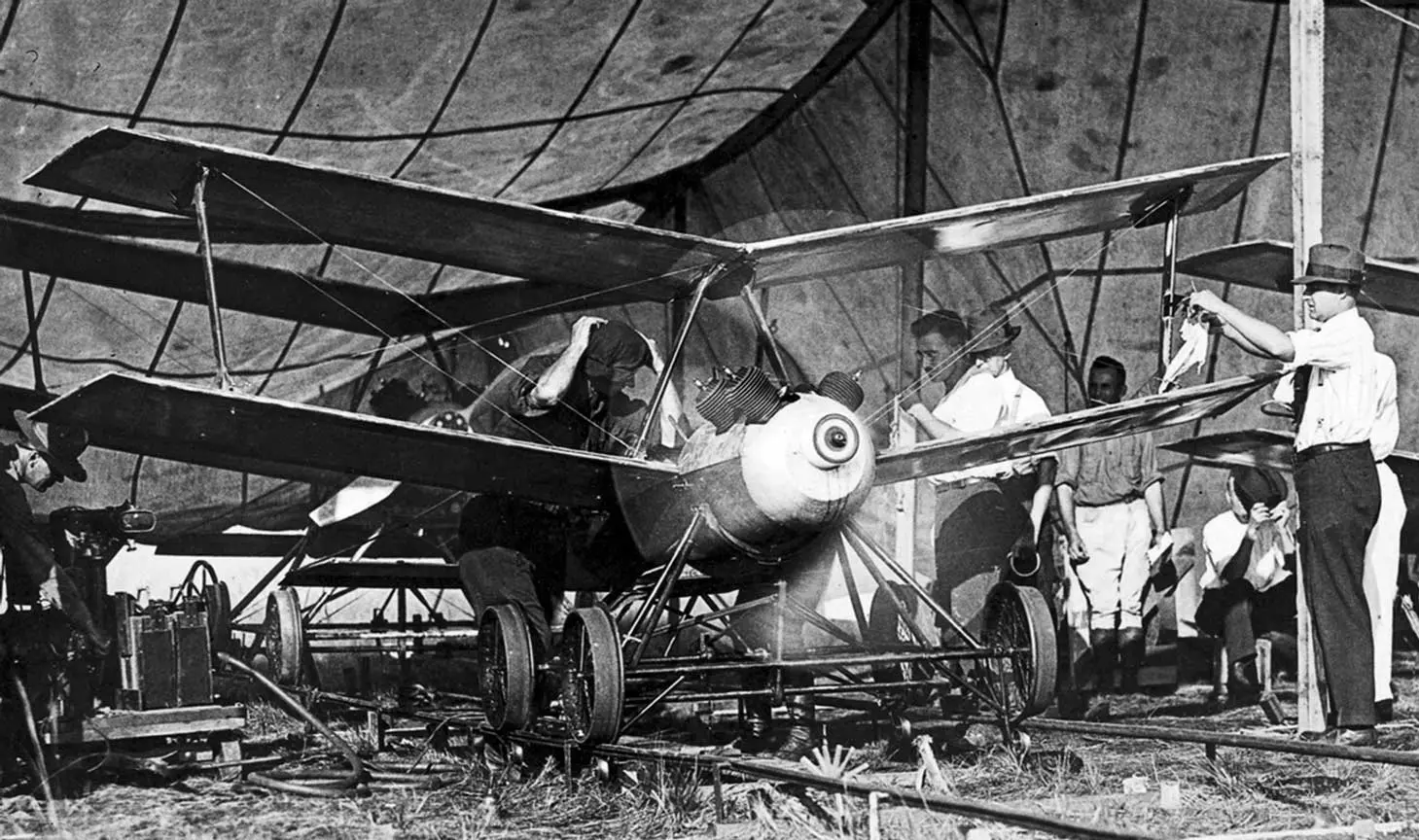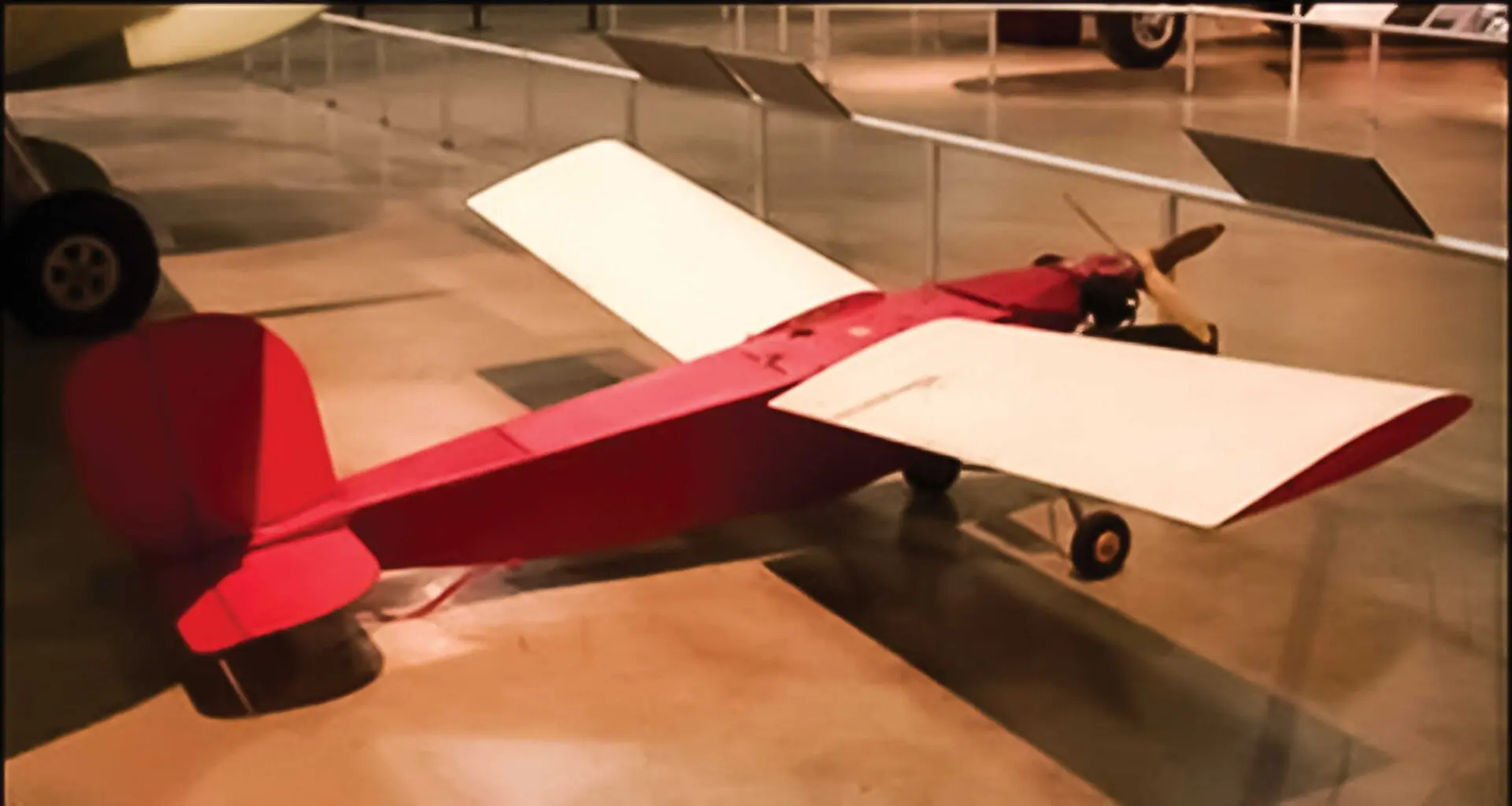The History of DRONES
By MS. CHRISTINE WALSH, STAFF WRITER
Drones have many functions, including monitoring infrastructure, crops, and wildlife; gathering, shipping, and delivering small goods; inspecting industrial sites; mapping and surveying land; responding to emergencies; protecting assets; firefighting; relaying communications; photographing; and filming. These applications would not be possible without the colorful history of drone innovation within the U.S. Air Force (UASF), including contributions from two well-known Hollywood actors—one of whom became a U.S. president.
THE KETTERING BUG
In 1917, electrical engineer Charles F. Kettering of Dayton, OH, invented the Kettering Aerial Torpedo—also known as the “Bug.†Launched from a small four-wheeled carriage led down a portable track, the Bug’s internal preset pneumatic and electrical controls stabilized and guided it toward a target. After its engine made the number of revolutions needed to reach its destination, a control closed an electrical circuit, shutting off the engine. Then the Bug’s 12-foot cardboard, biplane-like wings were released, causing its torpedo-shaped payload-carrying fuselage to drop, and the 180 pounds of explosives it was carrying to detonate on impact.
1917: Charles F. Kettering of Dayton, OH, invented the Kettering Aerial Torpedo—also known as the “Bug.â€
1939: Radioplane OQ-2A, the first mass-produced American drone.
1944: “Weary Willies†were Boeing B-17 Flying Fortress and B-24 Liberators turned into radio-controlled bombers.
1962: Ryan Model 147 “Lightning Bug†unmanned aerial vehicle.
1962: Lockheed D-21, guided by an inertial navigation system on a preprogrammed path.
1994: RQ-1 Predator, capable of flying over dangerous areas for extended periods.
The first pilotless vehicles were developed during World War I (WWI). Kettering’s Bug first flew in October 1918. Shortly thereafter, the Dayton-Wright Airplane Company built 45 additional Bugs before WWI ended in November 1918. Although promising in tests, the Bug was not used operationally during the war. After WWI, the U.S. Army Air Service, a USAF forerunner, conducted more tests, but funding ceased, and further development ended.
RADIOPLANE-1 (RP-1)
In 1935, character actor and radio-controlled model airplane enthusiast Reginald Denny became the first civilian to develop a remotely piloted vehicle. He began pitching his RP-1 drone to the U.S. Army Air Corps (another USAF predecessor) for anti-aircraft gunnery training. Over 2 years, he and his team conducted prototype test runs for California military leaders, first at the U.S. Army’s Fort MacArthur installation in San Pedro, then at the Army Air Force’s Twentynine Palms Airfield, and finally at the Army Air Corps’ March Field in Riverside County. Denny’s California-based Radioplane Company developed the design into the Radioplane OQ-2A, the first mass-produced American drone.
At the Radioplane plant, Army photographer David Conover, assigned by Capt Ronald Reagan (who later became a Hollywood actor as well as America’s 40th president), photographed Radioplane employee Norma Jeane Dougherty, leading to the first of many Hollywood screen tests (and roles) for the 18 year-old later known as Marilyn Monroe.
WEARY WILLIES
In 1944, the U.S. Army Air Forces 562d Bomb Squadron converted its battle-weary Boeing B-17 Flying Fortresses and B-24 Liberators into “Weary Willies,†airplanes automatically piloted and laden with explosives. Under the code name Operation Aphrodite, pilots packed the radio-controlled bombers with 20,000 pounds of explosives. They guided them into the air before ejecting when they reached key Nazi Germany-controlled targets and leaving the plane’s control to the mothership.
LIGHTNING BUG
In July 1960, the USAF awarded a contract to Ryan Aeronautical Company to perform further studies for a project code-named “Red Wagon,†which involved modifying a “Firebee†target drone to perform long-range reconnaissance missions. The radar and infrared signatures of previous drone-like structures were reduced on the Firebee by placing a wire screen over the jet intake, painting parts with nonconductive paint, placing radar-absorbing pads on both sides of the fuselage, repositioning the engine to the back of the fuselage, and using inward-canted twin tailfins to conceal the exhaust plume. The wings were lengthened for high-altitude flight, making it even more undetectable.
In 1961, the USAF ordered a photographic and signals intelligence reconnaissance version of the Firebee. Hence, the Ryan Aeronautical Company modified the Firebee with a new guidance system consisting of a time programmer, a gyroscope, and an altimeter; reconnaissance equipment, including a nose containing a U-2 camera; and a 35-inch “plug†in the fuselage to carry an additional 68 gallons of fuel. In turn, the Ryan Model 147 “Lightning Bug†unmanned aerial vehicle (UAV) was born, successfully completing 2 months of testing by May 1962. By 1964, a large number of Lightning Bugs were deployed in Southeast Asia.
D-21
The Lockheed D-21 was a UAV designed to carry out strategic reconnaissance missions over hostile territory.
D-21’s development started in October 1962 when the nation’s Central Intelligence Agency and USAF asked the Lockheed Martin Corporation to investigate the construction of a high-speed, high-altitude drone concept. The leader of Lockheed Skunk Works—a pseudonym for Lockheed’s advanced development programs—Kelly Johnson specified speeds of Mach 3.3 to 3.5 (at least 2100 miles per hour), an operational altitude of 87,000 to 95,000 feet, and a range of 3,500 miles.
Powered by a ramjet, the Lockheed D-21 used radar-absorbent materials and stealth design. Launched from the back of an airborne mothership, the D-21 was guided by an inertial navigation system on a preprogrammed path. Initially, Lockheed testers used an M-21 (a variant of the high-altitude Lockheed A-12 aircraft) to launch the D-21 drone.
After completing its sortie, the drone would eject its parachute-equipped high-resolution photographic camera, film canister, and navigational systems for a C-130 Hercules transport aircraft to retrieve in midair. After which, the drone was programmed to then self-destruct.
The first successful D-21 launch from a B-52 aircraft occurred on June 16, 1968. The drone flew 3,000 miles at 90,000 feet. Nonetheless, the D-21 program was canceled a few years later in 1971. The cancellation was due to several reasons, including the introduction of a new generation of photo reconnaissance satellites.
PREDATOR
In 1983, Israeli immigrant Abraham Karem developed a prototype for a small, long-endurance, medium altitude tactical reconnaissance UAV, the Albatross, which evolved into the Amber, and then the GNAT 750. At altitudes of up to 25,000 feet for periods exceeding 40 hours, the drone supported military operations in Bosnia-Herzegovina from 1995 to 1996. Initially a Navy-Army joint effort, the Secretary of Defense assigned the operation and maintenance service to USAF.
In flight, the ground crew controlled the UAV and its onboard sensors with a direct data link; when the aircraft was flown beyond a direct link’s range, the crew maintained control through a satellite data link.
A larger, higher endurance version, RQ-1 Predator, was designed and provided military commanders with an intelligence, surveillance, and reconnaissance platform capable of flying over dangerous areas for extended periods without risk to a pilot’s wellbeing.
In 1999, work began on Predator B, a refined derivative, which entered operations in 2007 as the MQ-9 Reaper and eventually replaced the Predator.
Since Sept. 11, 2001, the United States has significantly increased its drone deployment. Defense Secretary Robert Gates said, in 2008, that more than 5,000 UAVs have been utilized for military purposes, a 25-fold increase since 2001.
The future for drones within the USAF is bright, and it is thanks to the spirit of innovation that drone use has been made possible.






